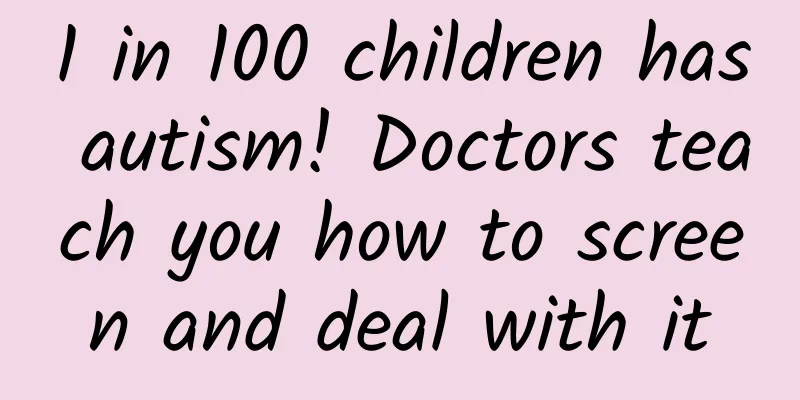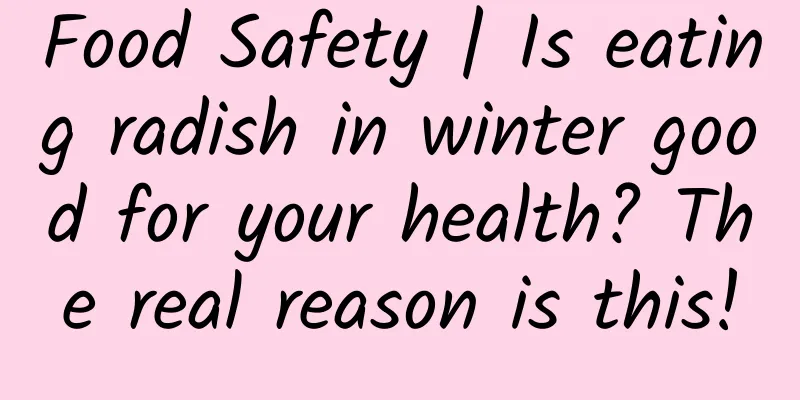1 in 100 children has autism! Doctors teach you how to screen and deal with it

|
Award-winning works (article category) of the Health Management Committee's "Popularize health knowledge, advocate healthy life" popular science collection Author: Liu Qing, Li Yang Unit: Shenzhen Children's Hospital Today's young people Posting to friends at any time: I am closed "Harvesting" the comfort from friends circle And happily posted: Thanks for your concern. I think it's over. However Autism was diagnosed No one can laugh To all autism families The moment my child was diagnosed, the sky fell Countless late nights They couldn't sleep all night! So, what is autism really? How to screen your child for autism? What should I do if my child has autism? There is a child in the community who has been diagnosed with autism. How can I help him? A professional doctor teaches you how to screen and respond 1. Public perception of autism: Some people think autism is introverted and socially phobic, some think autism is depression and mental retardation, and some think it is an incurable disease and a scourge. From a doctor's perspective, what kind of disease is autism? Autistic patients do have the phenomenon of not fitting in and having social interaction disorders, and they may also have anxiety, depression, and emotional control disorders, and some of them may also suffer from intellectual disability. However, autism is by no means simply introversion, social phobia or depression, because introverts or depressed people can interact normally with familiar people and friends; autism is not simply intellectual disability, and some ASD patients have normal or even extraordinary IQ and learning ability; autism is not an incurable disease, it can be discovered and treated early. Autism, also known as autism spectrum disorder (ASD), is a neurodevelopmental disorder characterized by varying degrees of social interaction and communication disorders, stereotyped behaviors, and narrow interests. Please note that autism has two core symptoms: the first core symptom is social interaction and communication disorders, which means that they do not want to or will not interact with others, rarely make eye contact, and do not share their interests and feelings with others. The second core symptom is that the behavior pattern is very stereotyped or repetitive, and the interest activities are also very narrow. At present, the prevalence of autism is showing an increasing trend year by year. The latest statistics from the US Centers for Disease Control and Prevention show that the prevalence of autism in the United States is as high as 2.3%, and the estimated prevalence in my country is also 0.7%. 2. Speaking of this, many parents may be worried about whether their baby has autism. How can we judge whether our baby is at high risk of autism or has autism tendency at an early stage? Now I will teach you the "Five No Behavior Screening" method to help you make judgments. As long as you master the following five points, you can make a preliminary judgment on whether your baby has autism tendencies. First: not (less) looking. If a baby over 6 months old does not look at the mother's face, does not smile at the mother, and especially pays little attention to the eyes of people, this is not looking; Second: No (little) response: If a baby over 10 months old turns a deaf ear to the parents’ calls when their parents call him by his nickname, this is a response. Third: No (less) pointing: If a baby over 1 year old lacks appropriate body movements, cannot make requests and point purposefully to things he is interested in, and cannot nod to indicate need or shake his head to indicate no, then he just doesn’t know. Fourth: No (little) speech: Most children with autism have delayed language development. If a 1.5-year-old baby still cannot actively call mom, and a 2-year-old baby cannot say more than 10 two-syllable words, this is no speech; Fifth: inappropriateness, which means inappropriate use of objects or toys, inappropriate use of language. For example, a baby gets a beautiful toy car, but instead of driving it around excitedly, he or she just turns the wheels of the car repeatedly and stereotypedly, and this stereotyped behavior is difficult to change by diverting attention. This is inappropriateness. If a baby has the "five no behaviors" or "five less behaviors", then he may be a high-risk child for autism. "Don't look, don't respond, don't point, don't talk, don't act inappropriately", have you remembered the "five no behaviors screening method"? 3. What should we do if we suspect our baby has autism after using the “Five No Behaviors Method” for screening? Once the screening finds that the baby has early symptoms or behaviors of autism, the baby needs to be taken to a professional hospital as soon as possible. The specialist will conduct a detailed medical history inquiry, mental and physical examinations, psychological and behavioral assessments, and some auxiliary examinations, because autism may also be accompanied by many comorbidities and positive physical conditions. If the baby is diagnosed with autism or a high-risk child for autism, a professional doctor will arrange positive social skills training and scientific intervention for the baby. With early detection and early standardized intervention, some patients can acquire good social communication and adaptability. Autism is not an incurable disease, and many autistic children can shine in the starlight! 4. If a baby is diagnosed with autism or a high-risk child for autism, parents are often very anxious. What can they do at home? This is a very good question. The participation of parents and families is very important for the rehabilitation of children with autism. First of all, parents and families should fully accept the child. We should accept our children's problematic behaviors just as we accept our own shortcomings. Only by admitting and accepting can we eliminate our sense of shame and anxiety, see the children's shortcomings while also seeing their shining points, establish a good parent-child relationship in a loving and safe environment, and calmly give children rich communication opportunities and full support. In autistic families, parents and friends also need to strengthen self-care, maintain mental health, relax regularly, keep in touch with family members, the community, and professionals, and strive for the best social support and necessary help. After the psychological preparation is done, the next step is to clarify the action goals, which are: to improve our children's social skills, self-care ability and social adaptability, and reduce the occurrence of problem behaviors. Ways to achieve this goal: (1) As parents, we must first actively learn professional knowledge related to ASD and acquire effective intervention resources and skills. We can consult professional doctors, teachers, and rehabilitation therapists, and actively study professional books, expert consensus, and diagnosis and treatment guidelines related to ASD. The learning of professional knowledge and skills can enhance parents' self-efficacy and strengthen their confidence in managing their children. (2) With sufficient knowledge and skills, parents can train their children's social skills and social adaptability in daily life scenarios such as games and sports according to their abilities and interests. We can interact with children through smiling and eye contact, talking and singing, actions, imitation, etc. Pay attention to the information provided by children, talk to them about what they feel, see and like, correctly interpret and respond appropriately in time. As children grow up, we can also help them develop certain specialties and social skills based on their interests and characteristics. Interests and hobbies can help children stabilize their emotions, build self-confidence, reduce anxiety and depression, and find happiness and meaning in life. (3) Another very important point in family life is that we should try to increase the time of interaction with the child, avoid the child being alone for a long time, reduce the time of exposure to electronic products such as television and mobile phones, and provide active companionship and high-quality interaction. (4) Dealing with problem behaviors. Children with ASD are prone to problem behaviors such as crying, temper tantrums, hitting, biting, self-harm, attacking, destroying, and harassing others due to their lack of social communication skills, repetitive stereotyped behavior patterns, and abnormal perception. When facing problem behaviors, parents need to maintain a basic attitude of patience and friendliness when interacting with their children, actively seek help from professionals such as doctors or therapists, and seek understanding and tolerance from the affected people around them. 5. What can we do for the autistic community? The autistic community is part of society just like us. Each of us should be kind, accepting and caring for this community. April 2nd of each year is World Autism Awareness Day. The theme of this year's 16th day is: "Caring for children with autism, paying attention to and supporting the caregivers and professional workers of autistic people." When you are around autistic children, please do not wear "tinted glasses". Their behavior may seem strange, but they are not deliberately trying to be different. Your misunderstanding will only make their situation worse. Your acceptance and respect are precious to them... When we meet people with autism and their families at work and in life, we can give them more love and patience, understand their and their families' efforts and difficulties, and give them some help when necessary. When we encounter children with autism in school, we can give them more space, understand and tolerate some of their alternative behaviors, support the inclusive education carried out by the school, give them the opportunity to receive education, and better integrate into society. Maybe autistic children cannot come over and embrace the world, but they can feel your and my tolerance and love. I believe that with the progress of society, the future of ASD children will be better! |
<<: “16+8 light fasting”: start a healthy eating journey
>>: Does a “fat baby” have to lose weight?
Recommend
How to clean the episiotomy wound during normal delivery? This is the right way to care for it
I believe that many women who have given birth wi...
What causes cracked nipples?
If a female friend develops cracked nipples durin...
What to do if you have hypothyroidism during early pregnancy
Hypothyroidism is a very common disease. Some wom...
What are the causes of high cholesterol during pregnancy?
Because the physical health problems of pregnant ...
Is it necessary to get a rabies vaccine after being scratched or bitten by a cat or dog?
Author: Tang Qin, Deputy Secretary-General of the...
What if I feel uncomfortable in my stomach when I am pregnant?
For expectant mothers, in addition to paying atte...
Can I massage my neck and shoulders during menstruation?
During menstruation, it is beneficial to massage ...
Vaginal cleansing liquid
Although Fuyinjie Wash is very effective in treat...
Pregnant women are not allowed to take vitamin C tablets
Vitamin C is a very important vitamin and the hum...
Women's winter health care methods
Many female friends are often prone to catching c...
Is it better to buy a new house through an agent or go to the sales office yourself? What do the two points mentioned by the agent mean?
When a new property is launched, many buyers are ...
What is the reason for delayed menstruation and breast swelling?
Delayed menstruation brings a lot of troubles to ...
What kind of oysters can be eaten raw (raw oysters generally need to be grown in first-class waters)
...
How long does it take for the uterus to contract after giving birth?
After delivery, every organ of the pregnant woman...
What are the functions of human chorionic gonadotropin in pregnant women?
In fact, whenever people mention human chorionic ...









